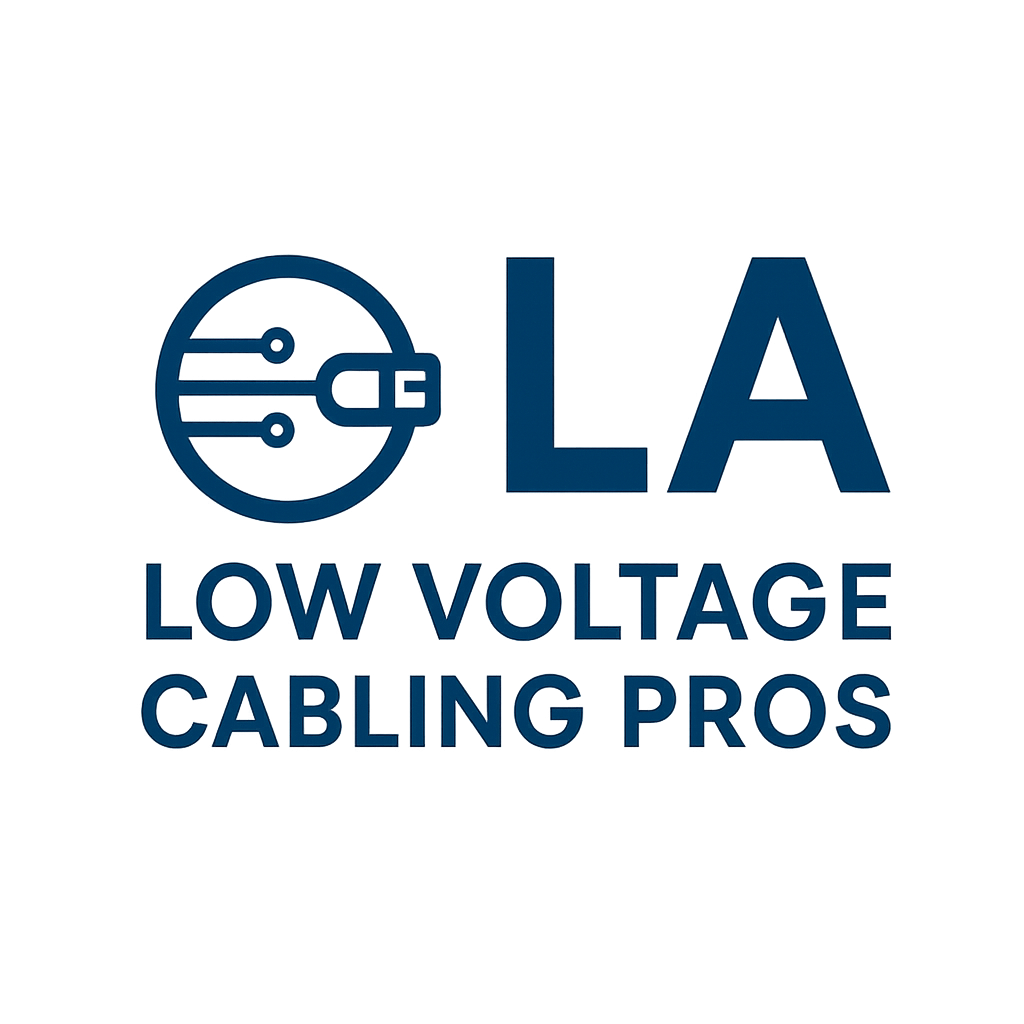Low Voltage Wiring Code in California: What You Need to Know for Safe and Compliant Installations
Understanding the low voltage wiring code in California is essential for anyone planning electrical, security, or network installations. Whether you’re a homeowner adding smart devices or a business upgrading structured cabling, following state code ensures your system is safe, efficient, and legal.
Low voltage systems cover everything from network cabling and security cameras to fire alarms, intercoms, and audio-visual wiring. Because these systems operate below 91 volts, they’re often overlooked — but California has specific rules you need to follow to avoid costly mistakes or failed inspections. For professional low voltage cabling services throughout California, trust LA Low Voltage Cabling Pros to get the job done right.
What Is Low Voltage Wiring?
Low voltage wiring refers to electrical systems that carry less power than standard electrical circuits. It typically includes:
- Data and network cabling (CAT5e, CAT6, fiber optics)
- Security cameras and alarm systems
- Telephone and intercom lines
- Audio/visual systems and home theater wiring
- Access control and smart building systems
While these systems carry minimal electrical current, improper installation can still lead to interference, fire hazards, or system failures — which is why California enforces strict wiring and safety standards.
Overview of California Low Voltage Wiring Code
California’s low voltage wiring requirements fall under the California Electrical Code (CEC), which is based on the National Electrical Code (NEC) with state-specific amendments.
Here are some key sections that apply to low voltage systems:
- Article 725: Covers Class 1, 2, and 3 remote control and signaling circuits
- Article 760: Fire alarm systems
- Article 770: Fiber optic cabling
- Article 800: Communication circuits (telephone, Ethernet, etc.)
- Title 24, California Building Standards Code: Energy efficiency, safety, and fire-resistance standards
California requires that all low voltage installations meet these codes to ensure both safety and performance.
Do You Need a License for Low Voltage Wiring in California?
Yes. Under California law, anyone performing low voltage wiring for commercial or residential projects must hold a C-7 Low Voltage Systems Contractor License issued by the Contractors State License Board (CSLB).
This license covers work such as:
- Security and CCTV systems
- Structured cabling installations
- Audio and video systems
- Access control systems
- Fire and life safety signaling systems
Unlicensed installations can result in failed inspections, code violations, and penalties — so it’s important to hire a licensed professional familiar with both state and local regulations.
Key Low Voltage Installation Requirements
To comply with the California low voltage wiring code, keep these main points in mind:
- Follow proper cable ratings – Use plenum-rated or riser-rated cables where required (especially in commercial buildings).
- Maintain cable separation – Low voltage and high voltage wires should be run in separate conduits or channels to prevent interference.
- Use fire-stopping materials – Any wall or floor penetrations must be sealed with approved fire-resistant compounds.
- Label all connections – Following TIA-606 labeling standards helps with troubleshooting and code compliance.
- Test and certify all cables – Verifying performance ensures your system meets code and warranty standards.
- Follow local permit requirements – Some California counties and cities (like Los Angeles and San Francisco) require permits for specific low voltage work.
Why Following Code Matters
Ignoring or misunderstanding the low voltage code can cause problems like:
- Interference and poor network performance
- Fire hazards due to improper cable placement
- Failed safety inspections or denied occupancy permits
- Insurance or warranty issues if non-compliant work is discovered
By following California’s regulations, you not only ensure safety but also create a future-proof infrastructure for your technology systems.
Common Low Voltage Applications in California
Low voltage systems are everywhere — in homes, offices, schools, and industrial buildings. Some common examples include:
- Smart homes: Lighting control, cameras, and automation systems
- Commercial offices: Data cabling, access control, and conferencing systems
- Retail stores: Security systems, audio, and digital displays
- Industrial facilities: Sensors, alarms, and network connections
No matter the type of project, compliant wiring keeps everything working safely and efficiently.
Working with Licensed Low Voltage Professionals
Because California’s wiring codes can be complex, it’s best to work with experienced low voltage contractors who understand both the California Electrical Code and local city regulations. Professionals ensure:
- Safe routing and termination of cables
- Code-compliant materials and installation methods
- Proper documentation for inspections and permits
- Long-term performance and safety
Hiring a licensed contractor also protects you from liability and guarantees your system passes inspection the first time. Understanding the differences between wiring schemes is crucial. Check out our T568A vs T568B wiring guide for detailed instructions.
Stay Compliant and Connected
Whether you’re wiring a new building or upgrading an existing one, following the low voltage wiring code in California is critical to your project’s success. With the right materials, methods, and licensed professionals, you’ll have a system that’s efficient, scalable, and fully compliant with state laws.
Contact your local low voltage wiring experts in California today to ensure your installation meets code and delivers long-lasting performance.
